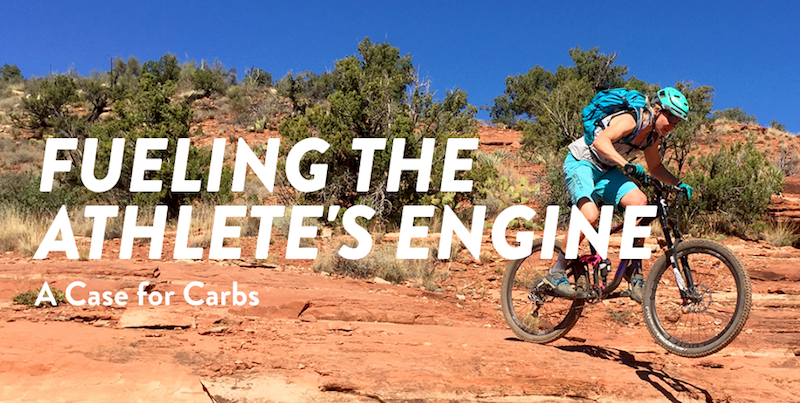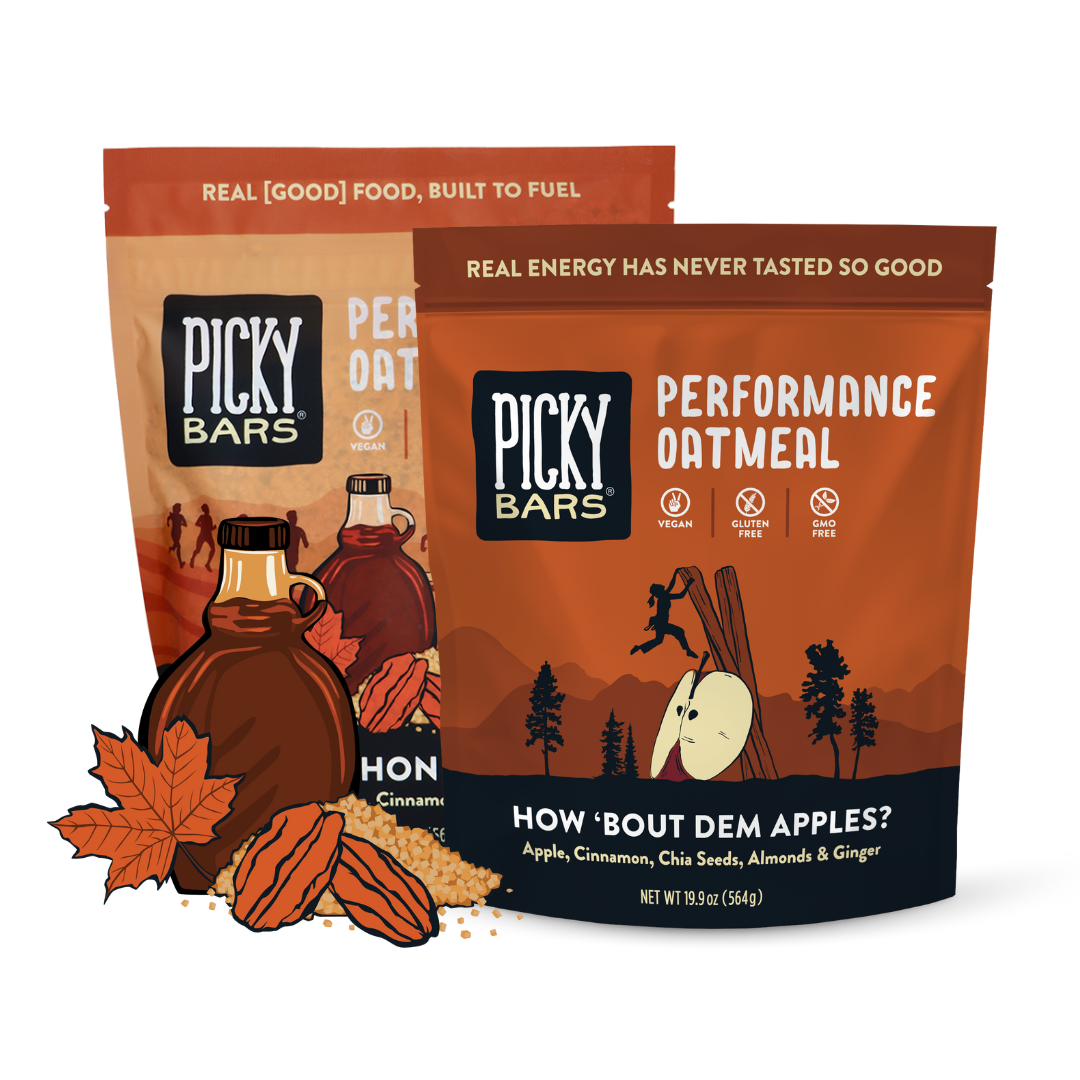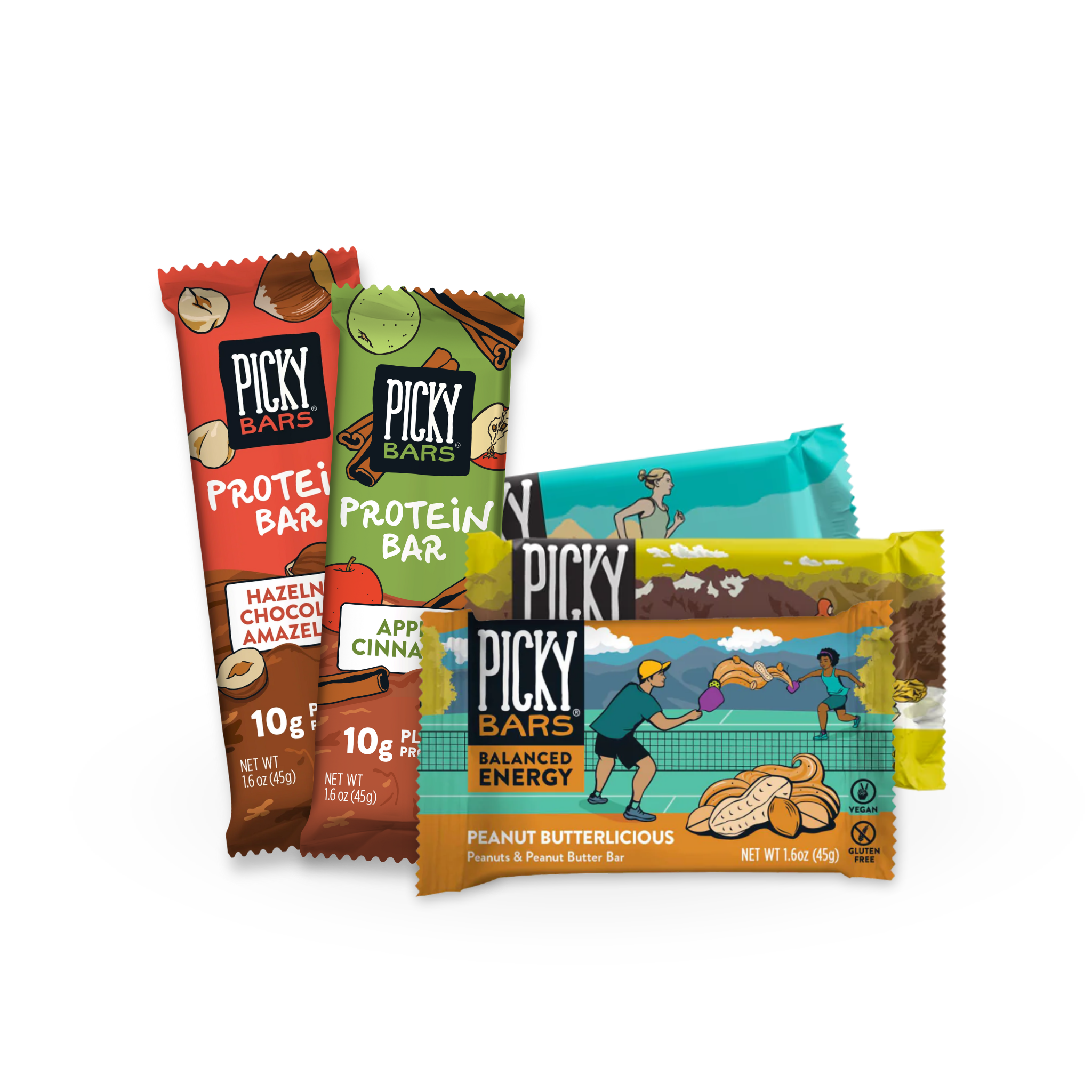

· By Sarah Conklin
Fueling the Athlete’s Engine (a case for carbs)
Alright nutrition nerds and generally curious people, we’re here to drop a little knowledge bomb on you.
Our tagline “it’s freaking science, dude” isn’t just a funny little saying, it’s the root of our nutrition profile. Back in 2010 we set out to create something that didn’t exist – a product made of recognizable, natural ingredients that was also properly balanced for sport. Real food products lacked the nutrient “muscle” to support heavy training, and sports specific products were full of chemicals, additives, and too much protein and/or fat for the body to process during workouts.
All Picky Bars have the same basic nutrient profile – 200 calories, 7-8 grams of fat, 28 grams of carbs, and 7 grams of protein. This 4:1 carb-to-protein ratio is ideal for nutrient absorption during activity and has become our equalizer, if you will. Let’s break it down…
Food to Fuel
[What to put in the tank to keep your engine running]
The body can convert three different types of calories into useable energy – 1) carbohydrates, 2) fats, and 3) protein. Pretty simple, right? Good start. This is where your activity and level of exertion comes into play: How hard you’re working and how long you’ll be doing it will determine how much, and what kind, of gas* to put in the tank.
*bad pun referencing Jesse’s “GI issues” that inspired Lauren to create Picky Bars in the first place
CARBS! Yay carbs.
Carbs are the easiest to break down and therefore the first your body turns to for fuel. Simple carbs (added sugars like honey and table sugar) easily convert to glucose, the body’s primary energy source; complex carbs (grains, fiber [fruits left in their whole state are complex because the fructose is accompanied by fiber]) take more time but keep blood sugar steady. Having a balance of the two keep that easy energy burning while preventing huge spikes and dips in energy levels. This makes them key for fueling activity, and should be replenished when you’re out working for long periods of time. Gels, chews, and sports drinks are great options for easily refilling that top layer of simple energy while on the go, but don’t rely solely on that “fast fuel” for your workouts.
FAT! The good F-word.
Next in energy pecking order are fats, which take more energy to convert but translate to a long-lasting, slow burn fuel. Think of them as the big logs you put on the fire after the kindling and twigs have gotten it burning. Longer endurance athletes (think ultramarathons) benefit from efficient fat burning for this reason – a steady dose of fuel may come at the expense of more digestive work, but pays dividends keeping the body moving for long periods of time.
PROTEIN! Mmmmuscles.
Lastly, protein. Protein has a ton of benefit to athletes but unfortunately is really taxing on the body to break down and slows down digestion. Keep your mid-effort protein balanced with a healthy dose of carbohydrates so your body can make smart use of it. Afterwards? Primo. A combo of protein and carbs is money for recovery.
“Every nutrient has its own time and place.” – Katie Valdes, MS, RD, CSSD
Katie, our Registered Dietician friend who helped on this article, suggests slathering a bar in nut butter if you’re looking to up your protein intake for more of a post-workout boost.
THE GIST / tl;dr
Make sure you have a solid base of fats and protein accompanying the carbs you’re taking in to fuel your activity. This will help you in the long run (sorry, puns) by steadying your blood sugar, offering a backup fuel source should you deplete all your carbs, and providing recovery benefits after. While you’re at mile 19 of a marathon or turning into the final hour of your long ride? Give your body those simple carbs it wants. Don’t put any extra work on its plate!
Using all three energy sources – the right way, at the right times – will set you up for peak athletic performance and keep you feeling great. Even at mile 23*.
*Ok we can’t totally promise that, mile 23 is bound to hurt at least a little.
Real-World Example:
[How Jesse Thomas Fuels for an Ironman]

Jesse (our CEO and co-founder, if you didn’t know) uses a combination of Picky Bars and simple carb sources to fuel while racing 140.6. Here’s what he aims for each race:
- GOAL: 1800 calories during race, aiming for 1200 from real food with complex carbs, fat, and protein (aka Picky Bars)
- 300-400 cal/hr starting on the bike
The bike is a critical time for fueling since you can’t eat on the swim, the 112 mile ride requires a lot of energy, AND you still have to put enough fuel in the tank to run 26.2 afterwards without falling to pieces.
Jesse eats a Picky Bar every 30-45 minutes (chomped in a couple bites with water) for 4-6 bars to start the ride.
- Switch to pure carbs
After finishing his bars Jesse switches to a pure carbohydrate fuel source (blocks or gels) for the remainder of the ride and the run. He’s also been known to swig some Red Bull while out there, and that’s not just a sponsor obligation talking. (He actually didn’t even tell us to put that in here.)
Bonus bits!
Jesse trains with all the flavors but his favorite flavor for racing is Cookie Doughpness because it has the fewest chunks (ie no big almonds or chocolate chips to chew through), has good moisture, and goes down easily.

Get some Doughpness for yourself
10 bars | $27.50






